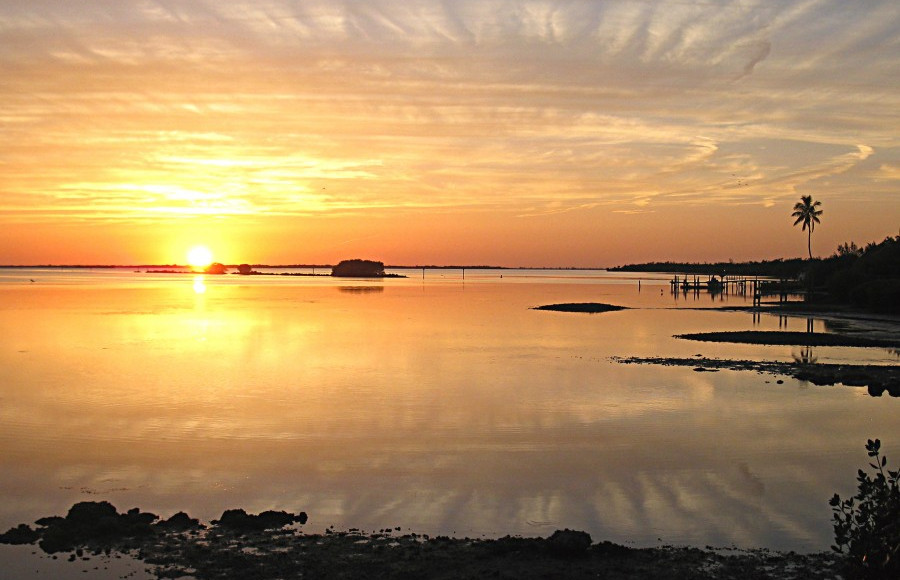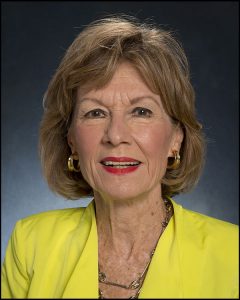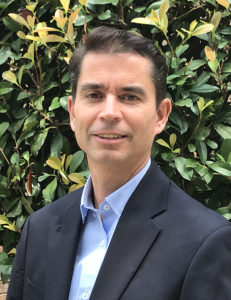
The University of Alabama will lead new Cooperative Institute for Research to Operations in Hydrology
With transformative support of up to $360 million over the next five years from the federal government, The University of Alabama is poised to become a standard bearer in translating water research into operations that improve the nation’s ability to predict water-related hazards and effectively manage water resources.
The award from the National Oceanic and Atmospheric Administration (NOAA), the largest external award in the University’s history, will be administered by the Alabama Water Institute and acknowledges UA’s commitment to make water a signature research and academic focus.
The effort establishes the Cooperative Institute for Research to Operations in Hydrology, or CIROH. Headquartered at AWI, CIROH is a consortium of 28 academic institutions, non-profit organizations and government and industry partners — including the Gulf of Mexico Coastal Ocean Observing System (GCOOS) — bringing together a powerful team of hydrologic researchers across the United States and Canada. They will develop and deliver national hydrological analyses, forecast information, data, guidance and equitable decision-support services to inform essential emergency management and water resources decisions.
GCOOS will contribute oceanographic and meteorological historical data to help establish a better understanding of land-ocean interactions and develop products designed to support stakeholder communications.
“The research institutes were established on campus to support and expand upon the great work done by our faculty, staff and students in addressing real challenges facing our society,” said UA President Stuart R. Bell. “This award will elevate those contributions, bringing innovation to such a critical issue as water quality and availability while enriching the educational experience of our students. The expertise of the Alabama Water Institute is positioned well to answer our nation’s call to improve the lives and livelihood of Americans and our partner nations.”
CIROH will work closely with two federal organizations located on campus — NOAA’s National Water Center and the recently announced U.S. Geological Survey Hydrologic Instrumentation Facility — allowing for highly productive collaboration between AWI and other federal agency scientists.
In addition to bringing academic and federal agency scientists together to work on shared water issues, this new initiative brings in a broad array of nongovernmental organizations like GCOOS.
“With CIROH based in Alabama, the GCOOS partnership  with CIROH enhances the long-term valuable relationships GCOOS has with the entire state of Alabama,” said Dr. Sara Graves, GCOOS Board Member and Director of the Information Technology and Systems Center (ITSC), University of Alabama System Board of Trustees University Professor and Professor of Computer Science at the University of Alabama in Huntsville. “GCOOS, as a NOAA/IOOS Regional Association for the five states bordering the Gulf of Mexico, is of increasing importance with the many challenges facing our region. As a long-time GCOOS Board member from the University of Alabama in Huntsville, it is a pleasure to be associated with CIROH and GCOOS for the benefit of Alabama and the region.”
with CIROH enhances the long-term valuable relationships GCOOS has with the entire state of Alabama,” said Dr. Sara Graves, GCOOS Board Member and Director of the Information Technology and Systems Center (ITSC), University of Alabama System Board of Trustees University Professor and Professor of Computer Science at the University of Alabama in Huntsville. “GCOOS, as a NOAA/IOOS Regional Association for the five states bordering the Gulf of Mexico, is of increasing importance with the many challenges facing our region. As a long-time GCOOS Board member from the University of Alabama in Huntsville, it is a pleasure to be associated with CIROH and GCOOS for the benefit of Alabama and the region.”
The consortium led by UA assists NOAA’s vision of a water- and weather-ready nation. CIROH will advance water research in support of NOAA’s Office of Water Prediction and reinforce the work of the National Weather Service and National Water Center through collaboration across the scientific community in four broad research themes:
- Water resources prediction capabilities;
- Community water resources modeling;
- Hydroinformatics;
- Application of social, economic and behavioral science to water resources prediction.
“I am proud to be spearheading this unprecedented Cooperative Institute, which will not only create a consortium of institutions that will leverage their individual prowess to address today’s most pressing water issues, but also usher UA forward in its status as an emerging and leading water research institution,” said Scott Rayder, AWI executive director.
CIROH will create curriculum programs across its consortium members and partners to prepare the next generation of water professionals. Local-to-national scale workforce training programs will translate CIROH advances into practice. Extensive outreach and engagement will connect CIROH to stakeholders, helping communities build resilience to water-related risks.
Dr. Steven J. Burian, AWI director of science and professor of civil, construction and environmental engineering, will serve as the executive director of CIROH.
“We now begin the real work of coproducing research with NOAA and other partners that will benefit society and provide learning opportunities for students for years to come,” said Burian. “The research innovations delivered by the Cooperative Institute will improve forecasts of floods and droughts, increase efficiency of water resources management, protect water quality and empower stakeholders to make confident and timely decisions.”
CIROH’s 14 consortium members include: The University of Alabama; Brigham Young University; Colorado School of Mines; Tuskegee University; The University of Alabama in Huntsville; University of Arizona; University of California San Diego, Scripps Institution of Oceanography; University of Hawai‘i at M?noa; University of Iowa; University of Minnesota, Twin Cities; University of Saskatchewan; University of Utah; University of Vermont; and Utah State University.
In addition to GCOOS, consortium partners include: Baron Weather Inc.; Coastal Carolina University; Consortium of Universities for the Advancement of Hydrological Science Inc.; Dauphin Island Sea Lab; Jupiter Intelligence; New Mexico State University; Oak Ridge National Laboratory; The Pennsylvania State University; RTI International; Stevens Institute of Technology; University of California, Davis; University of Illinois at Urbana-Champaign; and University of South Carolina.
“We’re thrilled to be a part of this exciting initiative that will  help us develop new advances in forecasting that take into account ocean observations collected over decades,” said Dr. Jorge Brenner, GCOOS Executive Director. “As the only certified observing system focused solely on the Gulf of Mexico, we’re positioned to help support CIROH, and connect its efforts to coastal communities to aid in science-based decision making.”
help us develop new advances in forecasting that take into account ocean observations collected over decades,” said Dr. Jorge Brenner, GCOOS Executive Director. “As the only certified observing system focused solely on the Gulf of Mexico, we’re positioned to help support CIROH, and connect its efforts to coastal communities to aid in science-based decision making.”













